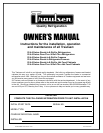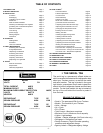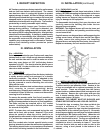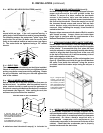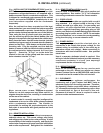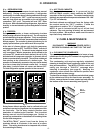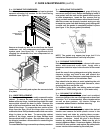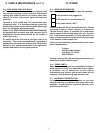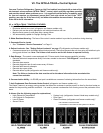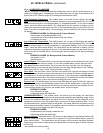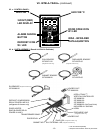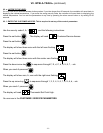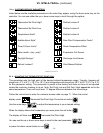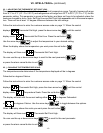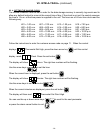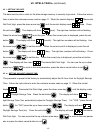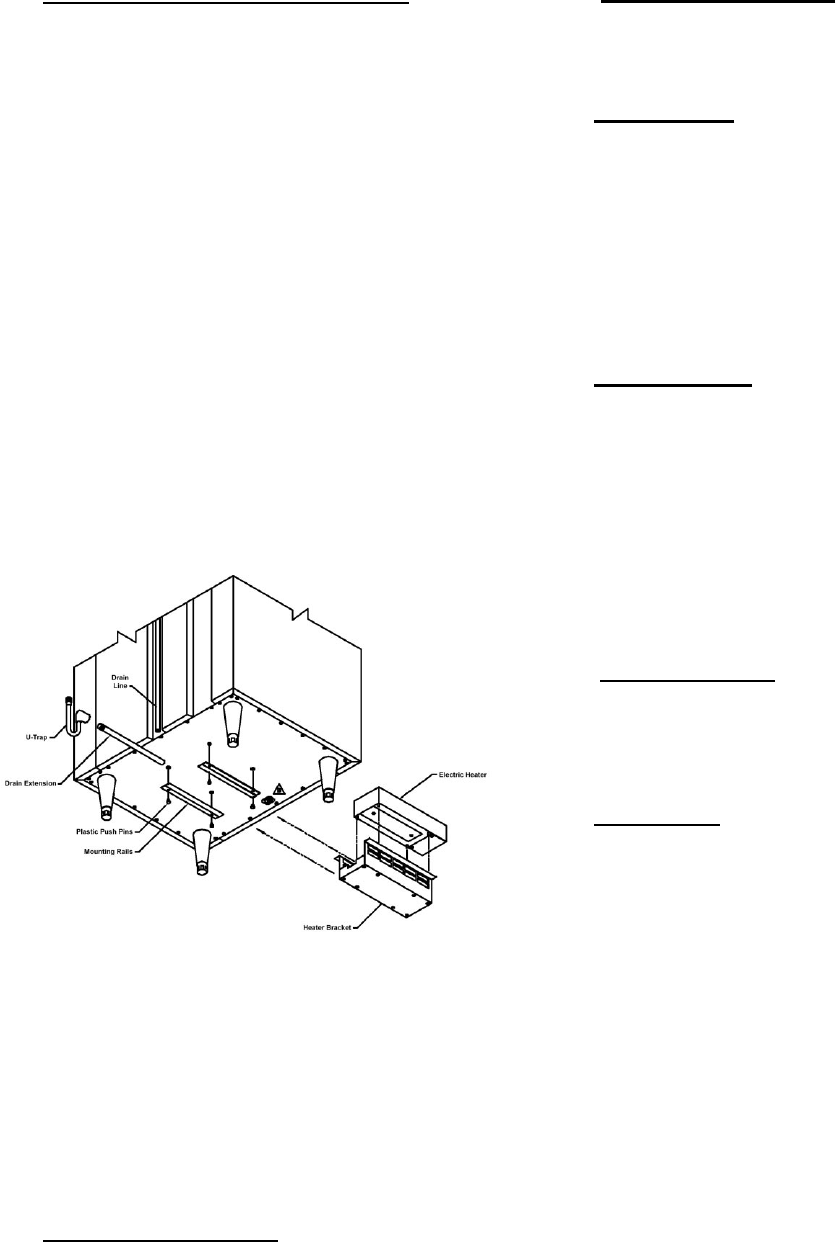
-4-
III. g - INSTALLING THE CONDENSATE EVAP (cont’d):
NOTE: Some models, such as single section dual-
temperature refrigerator/freezers, are supplied with a
bottom-mounted electric condensate evaporator. This
is shipped in a cardboard carton secured to the cabinet
interior, and must be PROPERLY installed prior to use
(see instructions supplied with the condensate
evaporator).
After the cabinet has been uncrated and the legs/
casters attached, you must install the bottom-mounted
electric condensate evaporator. Locate the four (4) holes
on the exterior bottom towards the rear of the cabinet.
Then, using the four (4) plastic push pins provided, at-
tach the mounting rails to the cabinet bottom (the end
flange is to be up and be facing towards the cabinet rear).
Next, place the heater into the heater bracket (note the
enclosed springs are only to be used when the heater is
placed on the floor). Slide heater and bracket into the
mounting rails. Plug the supplied cord into both the
heater on one end, and the electrical outlet provided on
the cabinet exterior bottom towards the front (see
figure 6). Screw the “U-Trap” on to the drain line
located on the rear of the cabinet and then screw the
drain extension into the “U-Trap.”
NOTE: The use of the “U-TRAP” supplied is required.
Failure to use this component may allow cold air to
migrate down the drain line, resulting in condensation
on the rear of the cabinet.
A remote model is normally supplied configured for
condensate to be run to a floor drain unless purchased
with a condensate evaporator. The installer is
responsible for making the required extension to the
floor drain in accordance with good practice and local
regulations.
III. h - REMOTE INSTALLATION:
Remote models are supplied without compressors,
solenoid valves, etc. The correct voltage, amp listing
and refrigerant are listed on the units serial tag. It is the
responsibility of the installer to specify and supply the
correct size compressor(s) based upon this information
and on-site requirements. Refrigerant line installation
III. INSTALLATION (continued)
III. h - REMOTE INSTALLATION (cont’d):
must be done in accordance with good practice and
local regulations. See section “III. g” for information
concerning condensate removal for remote models.
III. i - CORD & PLUG:
Most self-contained models are supplied with a cord &
plug attached. It is shipped coiled at the top of the
cabinet, secured by a nylon strip. For your safety and
protection, all units supplied with a cord and plug
include a special three-prong grounding plug on the
service cord. Select only a dedicated electrical outlet with
grounding plug for power source. NOTE: Do not under
any circumstances, cut or remove the round grounding
prong from the plug, or use an extension cord.
III. j - POWER SUPPLY:
The supply voltage should be checked prior to
connection to be certain that proper voltage for the
cabinet wiring is available (refer to the serial tag to
determine correct unit voltage). Make connections in
accordance with local electrical codes. Use qualified
electricians.
Use of a separate, dedicated circuit is required. Size
wiring to handle indicated load and provide necessary
overcurrent protector in circuit (see amperage
requirements on the unit’s serial tag).
III. k -
WIRING DIAGRAM:
Refer to the wiring diagram for any service work
performed on the unit. Should you require one, please
contact Traulsen Service at (800) 825-8220, and provide
the model and serial number of the unit involved.
III. l - CLEARANCE:
In order to assure optimum performance, the
condensing unit of your Traulsen unit MUST have an
adequate supply of air for cooling purposes. Therefore,
the operating location must either have a minimum of
12” clearance overhead of the condensing unit or allow
for unrestricted air flow at the back of the unit.
Clearance of at least 12” above is required in order to
perform certain maintenance tasks.
Fig. 6



